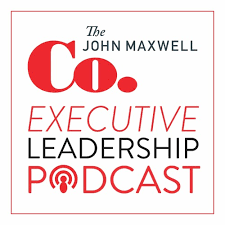Remember when many of us were concerned about consuming misinformation through Facebook? Your aunt or uncle shared some “news” that was absolutely alarming to them but you probably saw it for what it was, some “disinformation.” Well gone are the days when we had to worry about disinformation on Facebook (at least I hope they are gone). Unfortunately, there is another social media platform that is a source of news—and disinformation—for millions: Tik Tok.
A study published by the Pew Research Center last month revealed some interesting trends. “Among adults, those ages 18 to 29 are most likely to say they regularly get news on TikTok. About a third of Americans in this age group (32%) say they regularly get news there, a higher share than in years before. This compares with 15% of those ages 30 to 49, 7% of those 50 to 64 and just 3% of those 65 and older.” If such a large percentage of adults are regularly getting news through Tik Tok you can only imagine the percentage of teenage GenZers are getting news through there as well. If you guessed that percentage was high, you’d be right. A study in the UK confirmed that Tik Tok was the highest consumed news of source for teens. If that trend mirrors percentage of users in the US (66% of teens use Tik Tok, 62% use Instagram, and 59% use Snapchat) then it’s safe to assume that Tik Tok is also the most consumed news source for teens in the US.

Who is using Tik Tok?
For example, roughly eight-in-ten Black teens (81%) say they use TikTok, compared with 71% of Hispanic teens and 62% of White teens. (There were not enough Asian teens in the sample to analyze separately.)
Teens’ use of certain social media platforms also varies by gender. Teen girls are more likely than teen boys to report using TikTok (73% vs. 60%), Instagram (69% vs. 55%) and Snapchat (64% vs. 54%). Boys are more likely than girls to report using YouTube (97% vs. 92%), Twitch (26% vs. 13%) and Reddit (20% vs. 8%). (Report from Pew)
What’s the Issue?
Misleading edits, fake news stories and deepfake images make the rounds on Tik Tok and easily go viral as the algorithm continues to push the most engaged with trends. “When we enter this kind of world, where things are being manipulated or can be manipulated, then we can simply dismiss inconvenient facts,” said Hany Farid, a computer science professor at the University of California, Berkeley, who sits on TikTok’s content advisory council. Sometimes the misinformation is harmless—Did Taylor Swift Really Dump Travis Kelce? I sure hope not—other times the misinformation has a significant impact on what things teens rally behind and how they interact with fellow classmates and adults in their lives. Tik Tok acknowledges the presence of videos that “that mislead users by distorting the truth of events and cause significant harm to the subject of the video, other persons or society.” All of this sounds bleak. So, what are we to do? As someone who has close relationships with kids you can use your relationship to help instill critical thinking skills which will not only help them as they consume social media—specifically news on social media—but also the skills that will transfer into other areas of life like school, the workforce, and adulthood in general.
The next time a teen shares an interesting piece of news with you—whether you think it is 100% factual or whether you think it might contain some misinformation—I would encourage you to remember the following truth:
Consumption requires reflection.
You can adopt the following paradigm—P.A.C.E.—to encourage reflection:
P-Pause: Are we assuming that what we are seeing is correct? Pause before deciding and jumping to conclusions.
A-Ask: Emotionally, why am I reacting to this news? What would be different if this news were true? What would be different if it weren’t true?
C-Curiosity: What good reasons might someone who disagrees with this have for disagreeing? How can I put myself in their shoes? What, if anything, would someone have to gain by hyping this news up or exaggerating about it?
E-Engage: If this is true, what do I need to do about it? What is a reasonable response? What responsibilities do I have to do something?
This P.A.C.E paradigm can be especially helpful as viral videos come out regarding major, world-changing events. By helping teens reflect and respond appropriate you help set them up not only to be good teenage consumers of media but you set them up for a lifetime of being careful, critical, but charitable thinkers.


















